Aussie miners want FEO's iron ore assets? A new iron ore mine 'every year to the end of this decade', but who will be the buyers?
Australia's iron ore sector built its foundations on demand from Japan during the 1960's.
At the turn of this century, China took over as our biggest customer.
We exported more than 900 million tonnes of iron ore from the Pilbara to China in 2022.
But demand from the world's second-largest economy is moderating as its urbanisation plateaus and its residential construction sector cools.
Miners are now looking to a new era, with India and other emerging economies in South-East Asia tipped to become future key markets for our prized red dirt.
"China is nearing a structural peak in terms of its demand, it will still remain a very large market for us, but other markets, Asia and India, as examples, will continue to grow quite rapidly and that will offset any slowdown in demand," said Rio Tinto iron ore chief executive officer, Simon Trott.
He expects future demand for iron ore from the Pilbara will exceed recent historical levels.
"As we look forward in the next 20 years, we'll use as much iron ore, as we've used in the last 30 years."
"The scale of projects that are needed to sustain that is simply enormous," Mr Trott added.
Some of Western Australia's iron ore mines still feeding customer demand have been around since the inception of the now $124-billion-a-year sector.
Rio Tinto's Mount Tom Price mine, the first to export iron ore from the Pilbara in 1966, still operates today.
BHP's Mount Whaleback opened in 1968 and will likely continue to be mined for another decade or more.
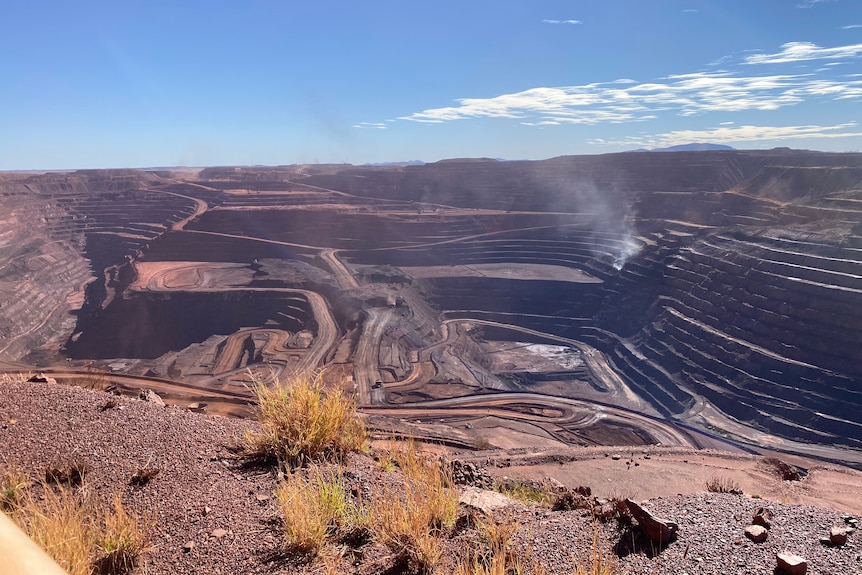
BHP's Mt Whaleback mine is the biggest open pit iron ore mine in the world.(ABC News: Rachel Pupazzoni)
But mining analyst Lachlan Shaw said the two giants of the industry could soon see their supplies from existing operations diminish.
"If we look across the Pilbara in the north of Western Australia, depletion of production from existing mines is becoming an increasingly significant issue for mining companies to deal with," Mr Shaw, who is co-head of mining research at UBS, told The Business.
"What we found, in general, is that depletion is likely a larger and more significant factor than has been appreciated in the market."
Overcoming depleting supplies
The world's biggest iron ore miner is on track to deliver up to 335 million tonnes of ore this year – it would be its second-highest year of production (it shipped 338 million tonnes in 2018) if it achieves that goal.
But with older mines' supplies diminishing, Rio Tinto says it needs to build a new mine every year to 2030, to meet forecast demand from a slowing China and its growing markets.
"Within the Pilbara, we're progressing a mine called Western Range," explained Mr Trott.
"That began the substantive part of construction earlier this year and that construction is progressing on track.
"Then we have another tranche of new mine developments as we look beyond this year, through to the end of the decade, when we'll bring on the Rhodes Ridge deposit," he told The Business.
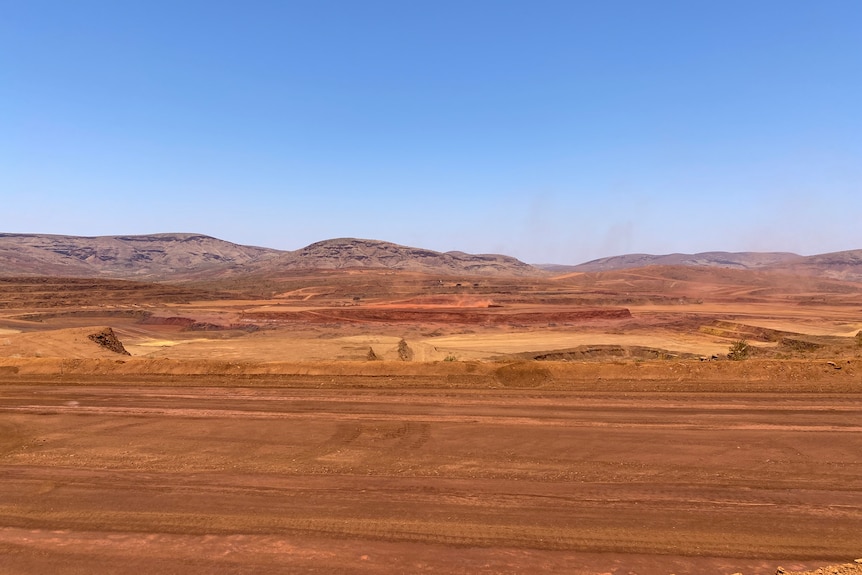
Rio Tinto opened the Gudai-Darri iron ore mine in the Pilbara in 2022.( ABC News: Rachel Pupazzoni )
Mr Shaw thinks Rio Tinto's ambition for a new mine every year, might be difficult to achieve.
"That's a stretch target for sure."
"Really we're talking towards the end of the decade for Rio Tinto to get those half a dozen mines into production, ramped up to nameplate capacity and supplying product into their system," he said.
But he added — the miner will need it.
"Rio Tinto talks to having 130 million tonnes of new mined supply coming into the system by 2028.
"But to that year, they have 90 million tonnes of depletion," he said.
"That's a huge amount of lost production that they need to replace."
Rio Tinto's biggest asset in the works is the Rhodes Ridge project, pitched as one of the largest and highest quality undeveloped iron ore deposits in the world.
It comes with a history.
The site is 50:50 co-owned with Wright Prospecting, a business controlled by the descendants of Peter Wright, who together with Lang Hancock (father and creator of the initial fortune of Australia's richest person, Gina Rinehart) pioneered Australia's iron ore sector in the middle of last century.
The Rhodes Ridge joint venture between Rio Tinto and Wright Prospecting goes back more than five decades with the tenement sitting idle as ownership disputes have made their way through the legal system.
"That's an exceptionally large, high-quality project — we're quite positive on that project to transform Rio's business in the Pilbara," said Mr Shaw.
But he added, replacing ageing mines isn't as straightforward as it once was.
"All the new mines that we're seeing now are going through, and rightly so, more involved heritage and co-development processes.
"That's arguably the right outcome in terms of the proper engagement with traditional owners, but from a point of view of commercial outcomes and actually getting mine production into the system, it's taking the mining companies longer to get replacement investment completed," Mr Shaw told The Business.
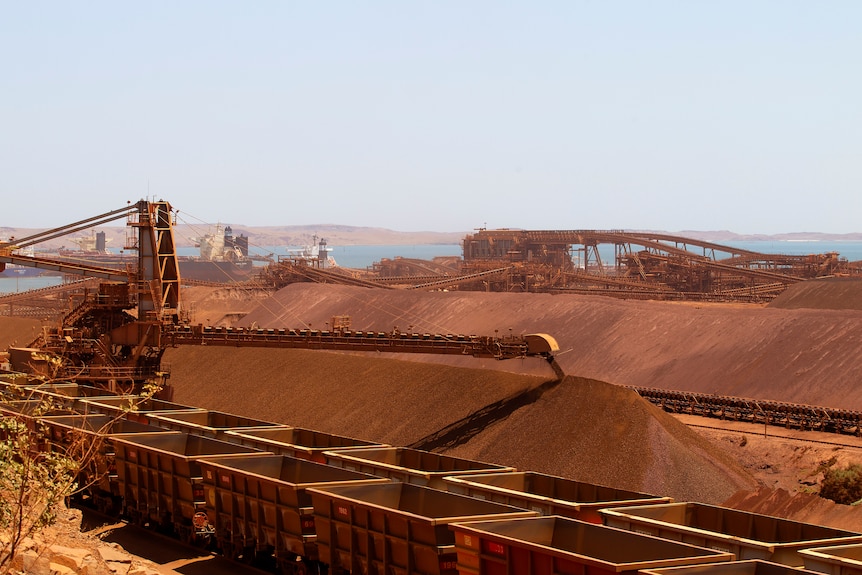
Hundreds of billions of dollars worth of iron ore is exported from the Pilbara in Western Australia every year.(Supplied: Rio Tinto)
BHP is looking beyond iron ore
The world's largest miner, BHP, expects China's demand will eventually decline.
"We're on the record as saying that we believe steel demand will plateau in the middle of this decade, and then in the fullness of time it will begin to shrink," said BHP chief executive, Mike Henry.
But the miner doesn't have the same outlook as its competitor about replacing that customer.
Mr Henry predicts India will be able to fulfil much of its own iron ore needs.
"Yes, there will be increased iron ore demand from some other South-East Asian countries, however, big demand centres like India, for example, as their demand for steel production grows, they're likely to meet that through indigenous or domestic resources of high-quality iron ore," Mr Henry said.
Mr Shaw argued the urbanisation of India and neighbouring countries could fill the gap created by China.
"There is a potential for the emergence of South-East Asia and India to significantly, or even fully offset the slowdown in demand growth that we expect from China, but it will depend on rates of economic growth and rates of investments," said Mr Shaw.
He noted that while India does have domestic iron ore supply, it doesn't have sufficient transport logistics to move the product.
"India needs significant investment in infrastructure to transport the iron ore from where it is located to where it is being consumed," he said.
"Now that may come, but at the same time you've got a country that has a faster population growth than China, more population than China, and a significant call on a whole range of different sorts of infrastructure, not just iron ore freight," he added.
"So, the case for India to become a modest importer of iron ore rests on whether or not they can build a domestic iron ore freight network, and the jury is out there."
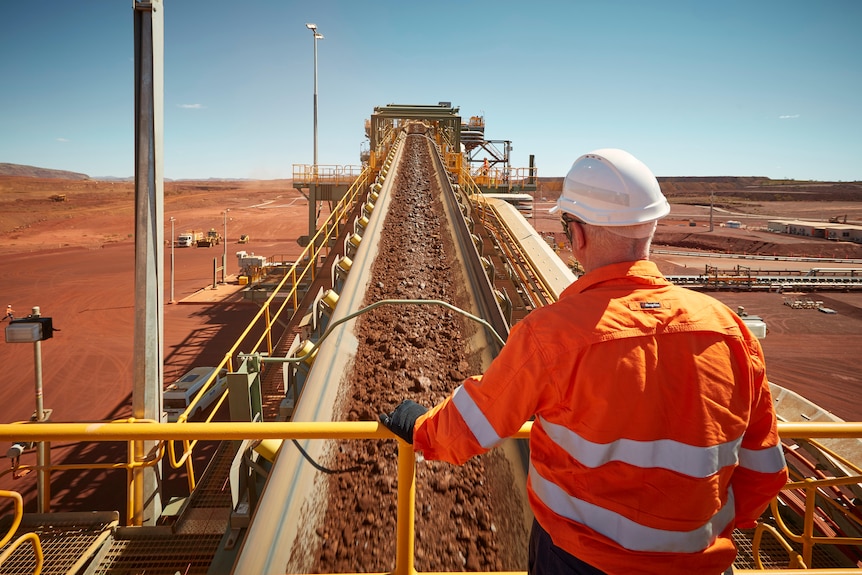
BHP's newest iron ore mine, South Flank, began production in 2021.(Supplied: BHP)
BHP's WA Iron Ore (WAIO) business produced 253 million tonnes of the steel-making product in the 2023 financial year.
It plans to creep that up to 305 million tonnes, then potentially to 330 million tonnes "over time".
"We are seeking to grow through productivity, and potentially some further de-bottle-necking capital to get us up to that," said Mr Henry.
New mines are not part of the mix.
"This very reliable business that we have with WAIO really does shine through year in and year out," said Mr Henry.
But the "Big Australian", as it's colloquially known, is looking beyond iron ore.
"It is not the business we have our focus on for big expansions and volumes.
"That's really potash, copper and nickel where we want to grow more quickly in those commodities that have strongest leverage to the megatrends," the global chief executive said.
BHP recently announced a $7.7 billion stage two investment into its potash business in Canada.
China to remain a 'critical partner' for Fortescue
Our third largest iron ore producer, Fortescue, is looking to continue its partnership with China.
Newly appointed chief executive officer Dino Otranto said he intends to build on the work of founder and chairman Andrew Forest with their major customer.
"Markets always change. For us though, China is and will remain a critical partnership," Mr Otranto said.
"We've really built the back of this organisation, in the early days on some great work that our chairman did, establishing our place in a market with China."
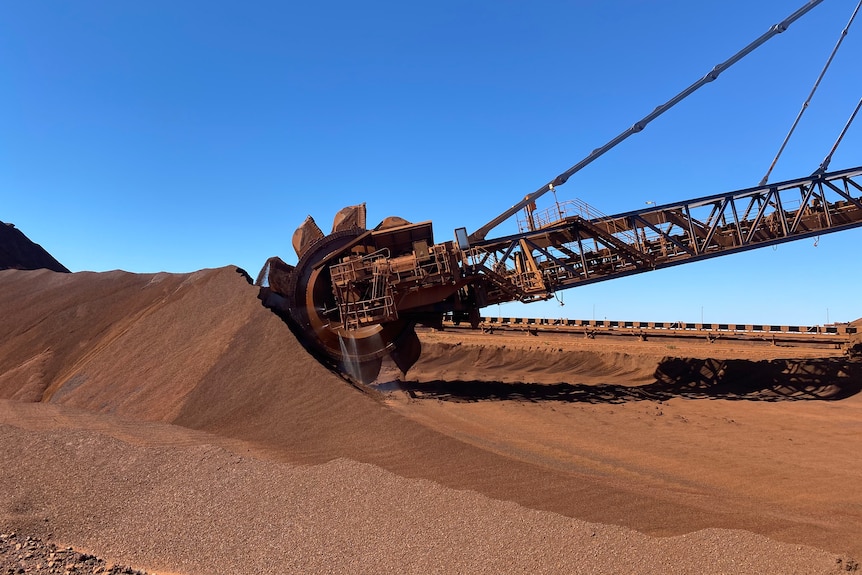
Forestcue is confident China's demand for iron ore will continue to keep the business busy.(ABC News: Rachel Pupazzoni)
If Mr Forest has his way, a future Fortescue looks increasingly more like a green energy company, than a pure iron ore miner.
It's recently undergone a rebrand with a new green logo and has dropped "Metals Group" from its name.
Mr Otranto is confident China will embrace Fortescue's green push.
"We're very positive in the way that China is reinventing itself to also take advantage of a green iron ore, green steel future," he told The Business.
Fortescue is still ramping up production at its newest mine Iron Bridge, which shipped its first ore in July this year.
Full capacity is still another two years away, it expects to ship 22 million tonnes a year by then – but the mine will only produce 5 million tonnes this financial year.
Fortescue exported 192 million tonnes of iron ore in the 2023 financial year and even with a new mine coming online, it expects to ship about the same amount this financial year.
Like BHP, Mr Otranto is not talking up the India demand story.
"We obviously never say never. Particularly as the world moves to green iron and green steel production, our product will be in demand."
Its next iron ore project is beyond Australian shores.
"We've started an exciting venture with the government of Gabon to develop and liberate one of the last large tier-one high-grade iron deposits on the planet," said Mr Otranto.
Fortescue is spending hundreds of millions of dollars to develop the mine in the West African nation, with its first ore to be shipped by the end of this year.
"That's our first pilot phase, we're also expediting our drilling campaign on the ore body and we'll continue to study that over the ensuing couple of years with the intent to then launch the larger project somewhat to the mid to late half of this decade," he explained.
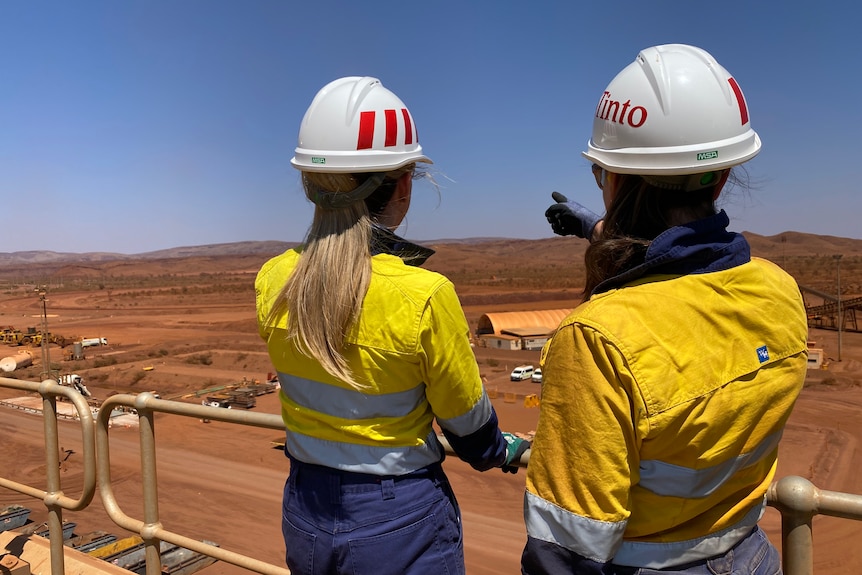
Iron ore miners continue to look to the future as they ramp up production.( ABC News: Rachel Pupazzoni )
The future of iron ore?
Analysts like Mr Shaw are still working out what the new supply and demand picture will look like for Australian iron ore.
"We have done a lot of work in the last three to six months looking at the issues around supply," he said.
"We need to do more to understand what the demand growth profile looks like coming out of South-East Asia and India, to get more comfort in how that supply and demand balance will come together."
One thing's for sure, as the single biggest sector propping up our economy, Australia's financial stability, for the foreseeable future at least, rests on how the new iron ore era plays out.